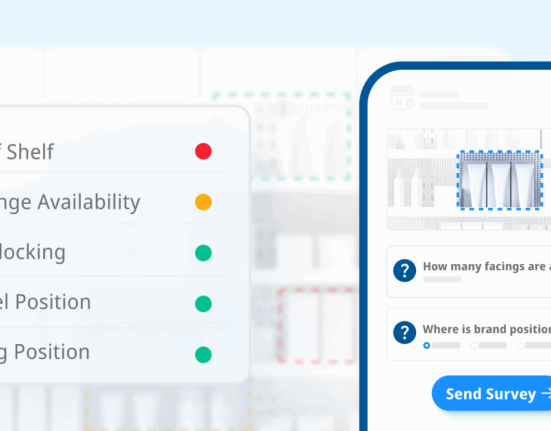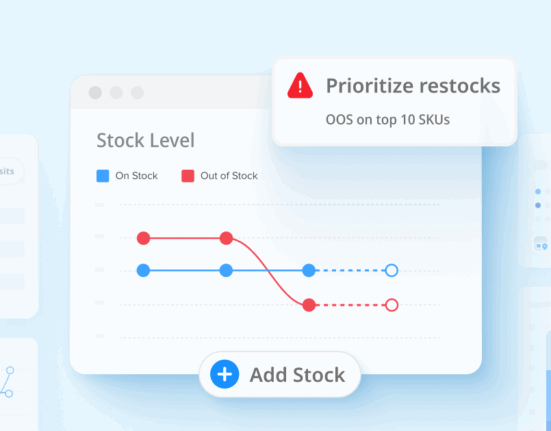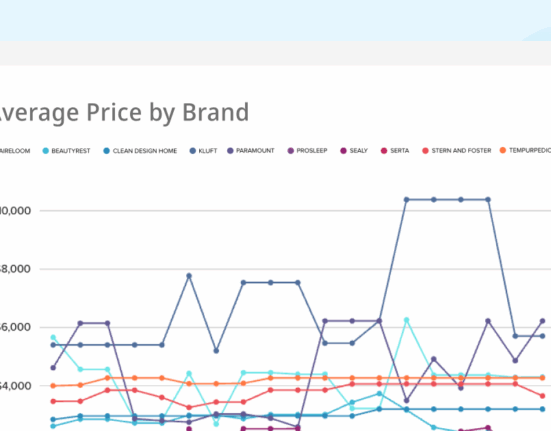For many shoppers, online reviews are crucial when making purchasing decisions. Whether it’s restaurants, big chains, local businesses or anything in between, shoppers turn to ratings and the testimony of other customers to lead them in the right direction.
Some customers ask their friends and family directly for recommendations, but others often turn to Yelp, a common customer review site, Google, or social media to read up on reviews.
According to a survey done by Power Reviews, 99 percent of consumers say they read reviews when shopping, and 98 percent of consumers consider reviews to be essential to their purchasing decisions. Furthermore, 85 percent of customers say that they trust online reviews as much as personal recommendations.
With these statistics in mind, it’s easy to see how much shopper reviews might be impacting on your sales with potential customers. It’s extremely important just to have any reviews at all, but doubly so to make sure they’re positive and reflect well on your products.
Why Are Customer Reviews Important?
Modern shoppers have a lot of advertisements and product recommendations thrown their way, and many people find it harder to trust the recommendations they’re being given. In fact, according to a study done by BrightLocal, 42 percent of consumers are confident they’ve seen fake reviews on Facebook. People just aren’t able to trust that the products being shown to them are legitimate and function as advertised.
Because of this, 96 percent of shoppers say that they specifically seek out negative reviews before making purchases. Shoppers feel that they are more likely to weed out the bad products if they see exactly what issues other people are having. And unfortunately, even just a few negative reviews can outweigh all of the positive ones.
The truth is what others have to say about your business is crucial and often carries more weight than anything else. Even if you know your business is good and your products are amazing, potential customers need to see the proof before they’ll be willing to buy.
Fortunately, the shoppers that love you and your merchandise are usually pretty willing to help out. According to that same BrightLocal study, about 65 percent of shoppers are willing to leave a review when prompted by a business to do so, with the best way to request being via email.

How to Ask Shoppers for Reviews
So, you know you want to start generating more reviews, hopefully positive ones. But how do you go about asking your shoppers to leave a review and rate their experience?
There are a few different methods you can try, but it’s important that you start here:
No. 1: Identify Where in the Customer Journey to Ask
The goal is to ask your customers for reviews at the most optimal time in their path to purchase. It doesn’t make sense to ask before they’ve had a chance to really experience the product but ask too late and you risk the shopper having moved on.
There are many different points, both high and low, in a customer/business relationship.
For example, let’s say a customer orders an espresso machine from Breville. They receive their package in the mail and they’re ecstatic. Two days later, they’re feeling frustrated and overwhelmed because there’s been an issue with the machine that they just can’t seem to work out. A week later, they receive a new machine in the mail and start to use it. A month later and they’ve had no further issues, so they’re back to being ecstatic.
If Breville had reached out within that initial week for a review, then there’s a high chance the customer would’ve responded with a negative rating to hash out their frustrations. Instead, the wiser choice is to reach out about a month or so into receiving their product. This way, the customer has had time to set up the machine, use it regularly, work out the kinks, and form a strong opinion.
Asking a customer to rate their experience at the wrong time can lead to a highly impactful, long-lasting negative stain on your reputation. Instead, here are some key times to reach out:
- After your customer service personnel have successfully resolved a customer issue.
- After the shopper has repurchased an item.
- After the shopper has tagged your brand on social media in a positive light.
No. 2: Try Just Asking
One of the easiest and most straight-forward ways to gather more customer reviews is to literally just ask for them.
Often, one of the most opportune times to do this is in person at brick-and-mortar stores when they’re already expressing joy or satisfaction toward your business or a particular product. If a shopper shares positive sentiment with you, don’t be afraid to request that they reiterate that sentiment online by leaving a review. If you have a happy customer then chances are that they want you to continue to succeed, which means they won’t mind helping.
These statements are most likely going to be made to cashiers or customer service workers, so consider training your team on how to politely word their review request.
It’s important to note that this strategy will only work if you have easy-to-find places for shoppers to leave those reviews. Maybe that’s a big, noticeable spot on your website, or a link at the bottom of their receipt. Either way, it’s smart to make it as simple as possible for shoppers to rate your business.

No. 3: Ask Open-Ended Questions
Some customers find being asked for reviews annoying or feel that there’s pressure to leave a good review even if that’s not how they truly feel. One way to combat this is to leave your questions toward them open-ended.
Instead of being direct, try starting a simple, non-expectant conversation and see where it goes. Ask questions such as:
- How are you liking X product so far?
- How did you enjoy your experience shopping with us?
- Are you interested in repurchasing X product?
- Have your experiences with store associates been satisfactory?
These questions work to create a truthful, light conversation that can benefit your business by providing feedback and gauging which shoppers would be open to leaving a review and which would prefer not to. These conversations can also tell you if a shopper is more likely to leave a positive or negative rating.
No. 4: Personalize Asks Where Possible
You are more likely to receive reviews if you make the shopper feel as though you need their testimony specifically. Personalization is key in building a strong relationship between customers and a business.
One way to make sure the shopper feels personally invested in the review is by explaining the importance and potential impact that reviews can have. This way, shoppers who want to support you know how to do so.
Before you begin a survey or begin a review campaign, send out an email or text to previous customers asking them to participate and explaining how leaving reviews can be beneficial for everyone involved. Note how leaving feedback can influence potential customers who are just like them, so they’ll be able to reach their peers. For some people, the idea of being an “influencer” is alluring.
It’s important to note that while you would obviously prefer that shoppers leave positive reviews, it’s never smart to ask directly for positivity. Make it clear that you want shoppers to share their honest feedback instead.
The truth is what others have to say about your business is crucial and often carries more weight than anything else.
Steps You Can Take To Get More Positive Reviews
While the first step is simply getting customers to leave any review at all, there are still some steps you can take to increase the percentage of positive reviews among them.
No. 1: Create a Personable Brand Image
Shoppers are more likely to view your brand and your products in a positive light if they have formed a personal relationship with your business. This is where having a strong social media presence can come in handy.
For example, one of the most well-known social media brand identities at the moment is Scrub Daddy. They have created a persona based on their products and consumer base and create content that both shows the functionality of their products while being humorous and relatable to the average consumer.
This accessibility makes it so shoppers feel a personal connection to the brand, which makes them more likely to be invested in the brand’s success. When new items come out and the social media persona showcases them, shoppers are excited to try the new product and want to like it.
This kind of funny, comfortable atmosphere can create a safer space for shoppers to leave reviews and join in on the fun.
No. 2: Incentivize Your Shoppers
Many businesses use incentives to motivate shoppers to leave more online reviews. For restaurants this might look like a free drink or food item with proof of review. Other retailers might offer in-store cash or a small percentage off of a purchase.
This strategy still does not involve explicitly asking for a positive review, but freebies make everyone happy, and a happy customer usually means a positive review.
No. 3: Share Positive Reviews From Other Shoppers
Take some of your brightest and shiniest reviews, highlight them, and share them with other shoppers. Not only will this incentivize people to leave a review so that their submission might get seen too, but it’ll remind them of all the good things your brand and product have to offer.
You can do this by sharing on social media, directly through email, or even directly on review pages. Many review sites like Yelp, Google reviews, or Trip Adviser offer business owners the ability to mark certain reviews as “helpful” which moves them higher up on the page for everyone to see.

No. 4: Do a Good Job!
When you provide an excellent product or service to shoppers, it leaves an impact.
Sometimes, those experiences can do all of the heavy-lifting and push shoppers to leave reviews of their own volition. If not enough to garner a positive online review, it’s almost certain that it will generate more positive word-of-mouth.
Negative Reviews Are Still Opportunities
No matter how much effort you put in, you will still get some negative reviews from time to time. Mistakes happen, whether it’s a faulty item, a negative associate interaction, a long shipping time, or any other issue. The key is making sure you are responding to those negative reviews—quickly.
79 percent of customers say that they are either “likely” or “highly likely” to leave a positive online review if the business had turned an initially negative experience into a positive one. On top of this, 60 percent of consumers are likely to use a business if they can see the business owner responds to their negative reviews.
However, it’s important to make sure that your responses are authentic and carefully crafted. Try not to take the shopper’s words too personally, and don’t respond defensively. This can make you look more guilty, and project the idea that you don’t take customer feedback seriously.
With the right response, you can actually help your business more in the long run.
Visit Wiser.com today to learn more about how to improve the consumer experience.









